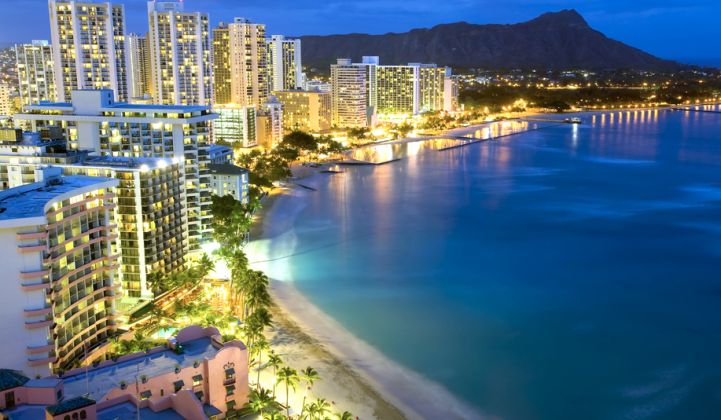Last week, Mina Morita and Marco Manglesdorf published an opinion piece in GTM that echoes Hawaiian Electric’s (HECO’s) latest attack against rooftop solar in Hawaii. Of course, HECO’s attempt to eliminate net metering is just the latest chapter in its years-long effort to block Hawaii customers from choosing solar. In 2010, the utility attempted to impose a moratorium on rooftop solar. In 2013 and 2014, HECO prevented thousands of customers from connecting their solar systems to the grid because of unsubstantiated technical concerns that were ultimately proven false. Then, just a few months ago, HECO told customers that it wouldn’t let them interconnect until the Hawaii Public Utilities Commission acted on HECO’s proposal to eliminate net metering, which compelled the commission to step in to end this hostage scenario.
Despite HECO’s efforts to stop its customers from adopting solar power, the amount of solar in Hawaii has grown from 40 megawatts to more than 400 megawatts since 2010. The vast majority of this is built on tens of thousands of rooftops across the islands. In fact, only about 2 percent of solar electric on HECO, MECO and HELCO’s grids is utility-scale, with the largest solar plant on Oahu sized at just 5 megawatts. To a greater extent than anywhere else in the country, solar energy in Hawaii is truly a rooftop phenomenon.
Sunrun is proud of its role in catalyzing Hawaii’s solar energy success. In 2010, Sunrun brought residential solar leasing to Hawaii, giving families a zero-down option to go solar that locks in energy savings on day one. Today, Sunrun is a leader in the intensely competitive solar financing market that serves most Hawaii homes and businesses that invest in rooftop solar.
Sunrun is also proud of its role as an investor in Hawaii’s clean energy economy. Sunrun has invested hundreds of millions of dollars to help allow Hawaii residents to “go solar.” The vast majority of these investments directly support local businesses that sell and install thousands of Sunrun home solar systems. Working with our local partners, we are serving nearly 6,000 customers in Hawaii today. Each of these customer relationships represents a 20-year commitment of service in Hawaii.
Lawmakers’ longstanding commitment to clean energy and the public’s overwhelming support for rooftop solar have been critical to Hawaii’s nationally recognized progress to date. This year, Hawaii’s legislature and Governor David Ige made history by enacting legislation to make Hawaii the first state in the country to commit to a 100 percent renewable portfolio standard.
I laud Hawaii’s clean energy leadership and hope other states will follow its lead. And while I am encouraged by the fact that the amount of rooftop solar on Oahu today exceeds the island’s largest fossil-fuel plant, it’s clear that the state has a long way to go: more than 90 percent of the power generated or sold by Hawaiian Electric on Oahu still comes from burning oil and coal. As policymakers chart the course to 100 percent renewables, I strongly encourage Hawaii to build on its own successes.
Yet HECO is lobbying to eliminate the very framework that has made rooftop solar successful in Hawaii. HECO’s objective is to replace net metering with a complicated, half-baked concept that a former tax director for the state of Hawaii says triggers new taxes for solar consumers. If that’s not bad enough, a national law firm’s research finds that HECO’s proposal would prevent Hawaii customers who buy solar systems from qualifying for the 30 percent federal Investment Tax Credit.
No state in the country has adopted such an approach that would expose customers to taxes and force them to forfeit their federal solar tax credits. HECO’s plan would knowingly destabilize rooftop solar in Hawaii.
Fortunately, policymakers have alternatives to HECO’s drastic proposals. They can choose to take advantage of Hawaii residents’ strong interest in rooftop solar rather than seeking to punish them for it. Time-of-use (TOU) rates, for example, are a proven mechanism to encourage customers to shift when they use or provide electricity, thus lowering costs for everyone. California regulators are so compelled by the benefits of TOU rates that last week they ordered utilities to make TOU the default option for all utility customers in the near future. TOU rates coupled with net metering in Hawaii would also encourage solar customers to adopt emerging technologies like storage to align generation with load, which provide myriad benefits to everyone who is connected to the grid. HECO’s proposal to eliminate net metering does not support such important policy advancements.
What’s needed here are real solutions, not accusations and name-calling. To succeed in reaching the goal of 100 percent clean energy by 2045, we need to work together to build a clean energy future that empowers, not taxes, the people of Hawaii and charts a continued successful path for other states to follow.
***
Bryan Miller is senior VP of public policy and power markets at Sunrun.
Industry Perspective

Rooftop Solar Is Critical to Hawaii’s 100% Clean Energy Future
Sunrun’s VP of public policy, Bryan Miller, responds to a recent perspective piece on abolishing NEM in Hawaii.

Rooftop Solar Is Critical to Hawaii’s 100% Clean Energy Future
-
41Where Will DOE’s Loan Program Make the Next Climate Tech Investments?
-
15What the Frack Is Happening With Natural Gas Prices?
-
9With an Energy Crisis Brewing, No Peak in Sight for Emissions


